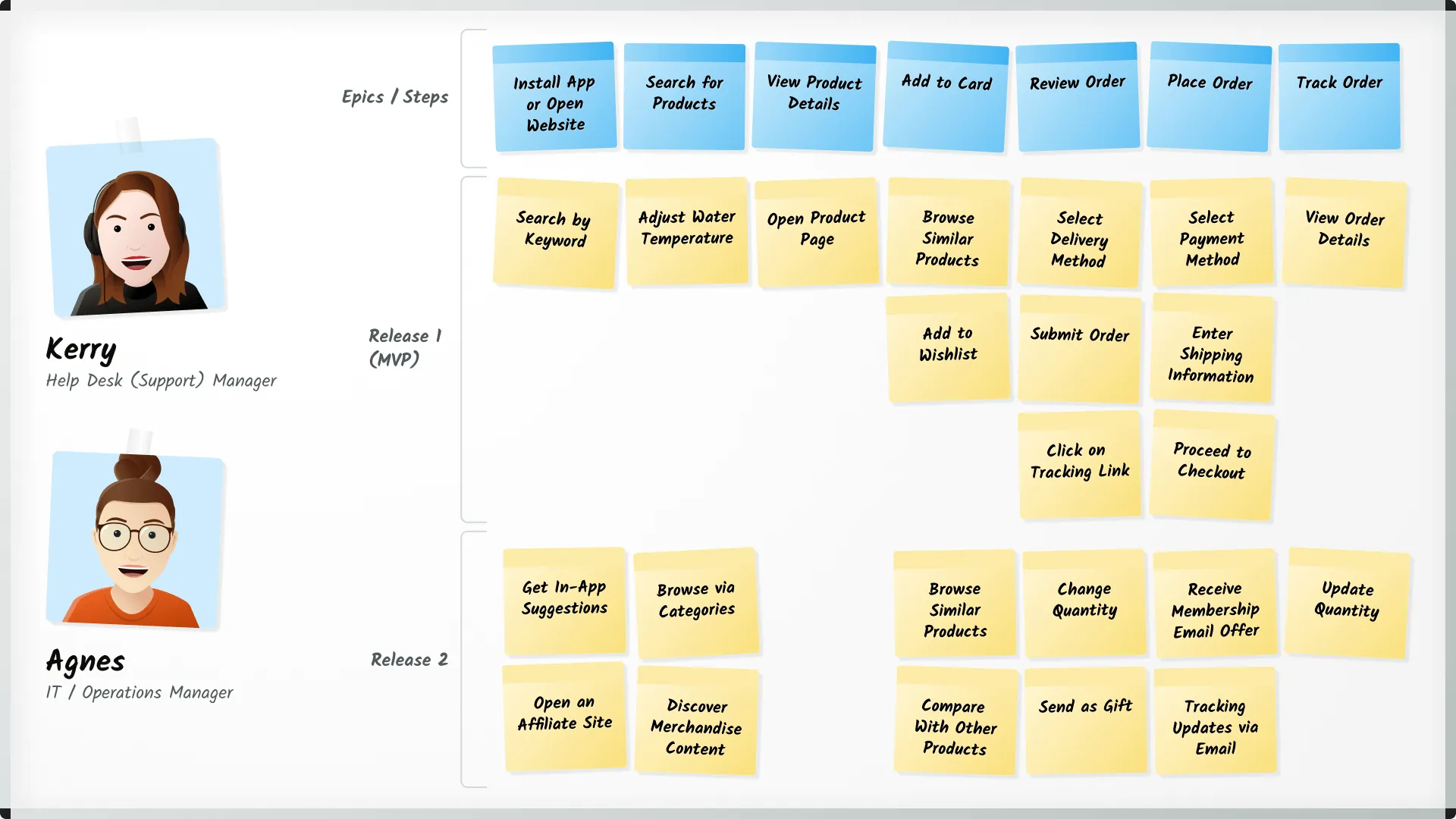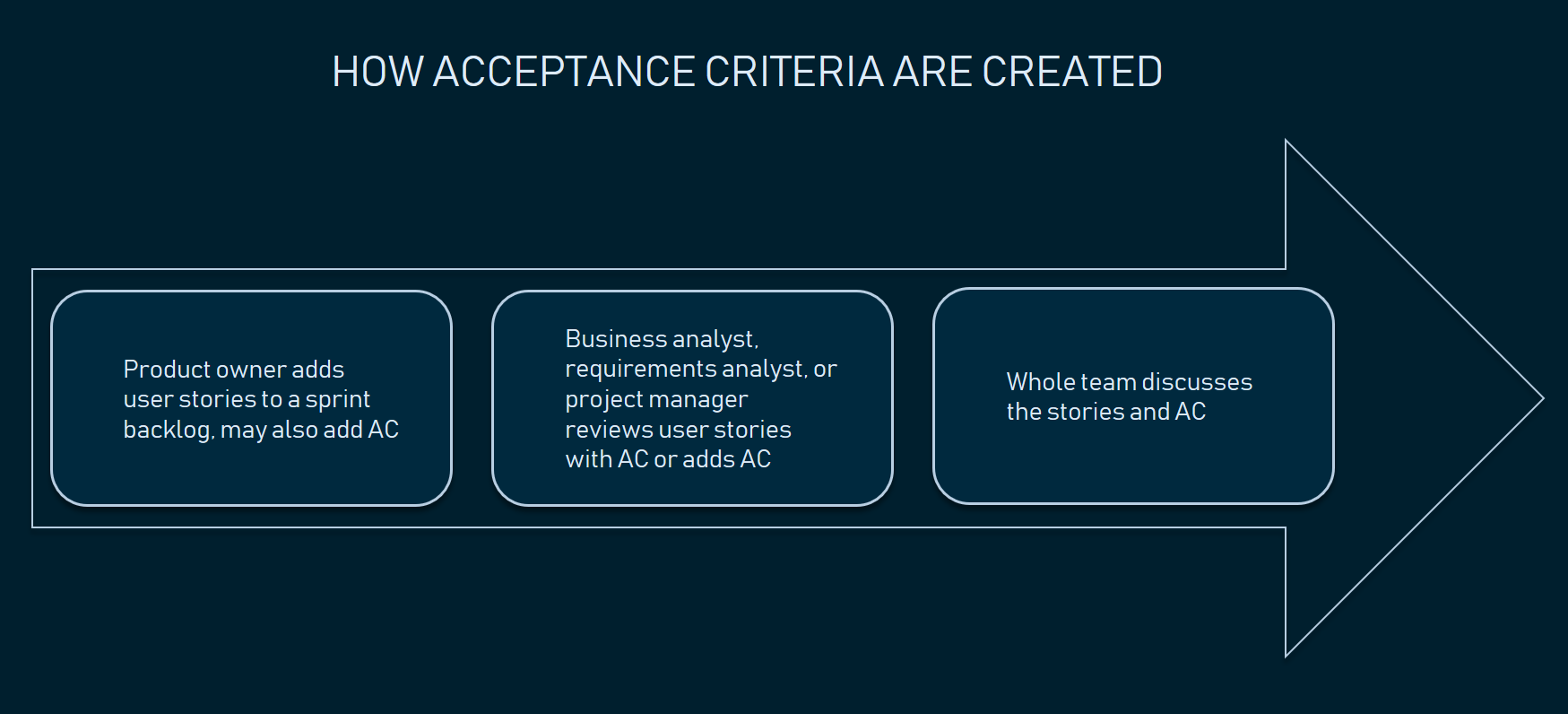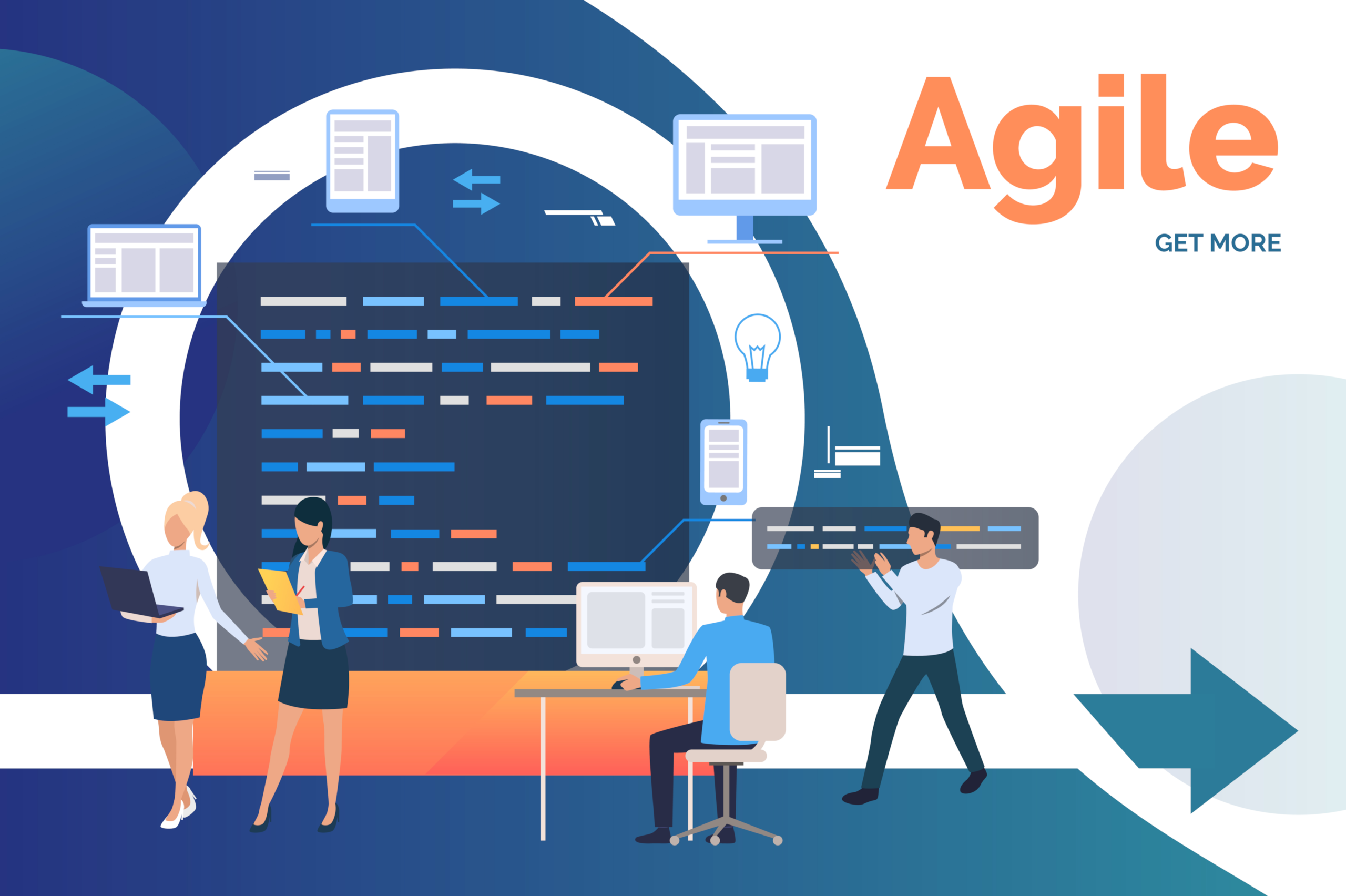In the rapidly evolving world of software development, the role of an Agile Business Analyst has become increasingly vital. These professionals are at the forefront of creating successful projects by gathering, analyzing, documenting, and managing requirements. They are the driving force behind translating business needs into actionable project deliverables.
In this article, we will explore the profound importance of an Agile Business Analyst, its multifaceted responsibilities, the essential skills he or she might possess, and how professionals can make a seamless transition into this dynamic role from a traditional Business Analyst position.

Who is an Agile Business Analyst?
For us to better understand who an Agile Business analyst is, we might as well discuss agile methodology and several other concepts related to this position.
Understanding the Agile Methodology
To fully grasp the significance of an Agile Business Analyst, we must delve into the core principles of Agile methodology. Agile is not just a framework; it is a mindset that revolutionizes software development. Emphasizing collaboration, flexibility, and rapid adaptation to changes, Agile enables agile teams to deliver value to customers in shorter cycles, driving continuous improvement.
Role of an Agile Business Analyst in an Agile Team
An Agile Business Analyst is not just a passive observer but an active catalyst for progress. They play a pivotal role in bridging the gap between stakeholders and the development team. By fostering clear and effective communication, they ensure that all development team members are on the same page. With their expert skills in eliciting, analyzing, and prioritizing requirements, they have a profound impact on defining project scope and ensuring the ultimate quality of the deliverables.
Collaboration with Stakeholders and Development Team
In the world of Agile, collaboration is king. An Agile Business Analyst acts as the glue that binds stakeholders and the development team together. By facilitating open dialogue and information exchange, they ensure that everyone understands the big picture. This collaborative approach fosters an environment where all parties can contribute their expertise, leading to a more robust and well-rounded set of requirements.

The Pivotal Role of Business Analysts
At the heart of every successful project lies a skilled and capable Business Analyst. An Agile Business Analyst takes on the responsibility of translating abstract ideas into concrete requirements. Their ability to elicit clear and unambiguous requirements shapes the foundation of the entire project. They work tirelessly to ensure that every stakeholder’s needs are accurately captured, thus laying the groundwork for seamless execution.
Impact of Eliciting, Analyzing, and Prioritizing Requirements
The quality of requirements directly impacts project outcomes. An Agile Business Analyst is like the architects of a project; they meticulously analyze, validate, and refine requirements to ensure they are complete, consistent, and feasible. By paying utmost attention to detail, they prevent costly rework and delays in the later stages of the project.
Importance of Possessing Strong Interpersonal Skills
Beyond technical expertise, an Agile Business Analyst must possess strong interpersonal skills. As primary communicators between stakeholders and development teams, they must navigate the complexities of various personalities and interests. Effective communication fosters collaboration, builds trust, and engenders a sense of ownership among stakeholders, leading to a smoother project journey.

Roles and Responsibilities of an Agile Business Analyst
An Agile Business analyst assumes several roles and responsibilities in a project and can have a great impact on a project’s success. However, it should be remembered that these roles and responsibilities can differ based on the agile business analyst salary.
Supporting the Product Owner with Decision-Making
Agile Business Analysts don multiple hats during a project’s lifecycle. One of their key roles is to provide invaluable support to the Product Owner in making informed decisions. By thoroughly understanding the business goals and objectives, they can assist the Product Owner in aligning requirements with the broader organizational strategy.
Recognizing and Understanding Business Needs
The success of a project hinges on how well an Agile Business Analyst can recognize and understand the underlying business needs. Their ability to dive deep into the business domain and empathize with stakeholders enables them to accurately capture requirements that truly matter.
Analyzing the Business Domain in Detail
An Agile Business Analyst leaves no stone unturned in their quest to gather comprehensive requirements. Their in-depth business analysis of the domain allows them to identify critical requirements and potential risks that might otherwise be overlooked.
Stocking and Grooming the Product Backlog
In Agile projects, the product backlog is the holy grail, containing a prioritized list of requirements that drive the project forward. Agile Business Analysts are the guardians of this backlog, ensuring it is well-stocked with clear, concise, and prioritized requirements.

Techniques for Requirements Elicitation
Effective requirements elicitation is an art that Agile Business Analysts have mastered. They employ various techniques, such as interviews, workshops, and surveys, to gather information from stakeholders. This collaborative approach ensures that the requirements truly reflect the collective wisdom of all involved.
Fostering a Collaborative Environment
An Agile Business Analyst understands the power of collaboration in driving successful project outcomes. They foster a collaborative environment during requirements elicitation, allowing stakeholders to engage in open dialogue and creative thinking. This dynamic exchange of ideas enhances the quality of requirements and reduces the risk of misunderstandings.
The Role of Active Listening
The importance of active listening cannot be overstated. An Agile Business Analyst practices this art to ensure that they not only hear but truly understand the needs of stakeholders. By actively engaging in conversations, they build trust and rapport, making stakeholders feel heard and valued.
Various Techniques for Eliciting Clear and Unambiguous Requirements
An Agile Business Analyst has a diverse toolkit for eliciting requirements effectively. They use techniques like brainstorming sessions, prototyping, use cases, and user stories to ensure that the requirements are crystal clear and unambiguous.

Ensuring Requirements are Complete, Consistent, and Feasible
Once requirements are gathered, an Agile Business Analyst subjects them to rigorous business analysis. They ensure that the requirements are complete, covering all aspects of the project. They also verify consistency to avoid contradictions and feasibility to ensure the project’s practicality.
The Iterative Process of Requirements Analysis
Requirements analysis is an iterative process. An Agile Business Analyst continuously refines and enhances the requirements based on feedback and changing circumstances. This iterative approach allows for flexibility and adaptability, crucial elements in the Agile philosophy.
The Importance of Requirement Validation
An Agile Business Analyst understands that requirements must be validated against stakeholders’ needs. This validation ensures that the requirements accurately reflect what the stakeholders truly desire, reducing the risk of misinterpretation.

Prioritization Methods
Agile projects often involve numerous requirements, and not all can be addressed simultaneously. An Agile Business Analyst employs various prioritization techniques, such as the MoSCoW method, cost-benefit business analysis, and risk assessment, to identify the most critical requirements that must be addressed first.
Creating Clear and Concise Requirement Documents
Clarity is key in requirement documents. An Agile Business Analyst creates clear and concise documents that are easy to understand and communicate. These documents serve as a valuable reference for all agile team members throughout the project.
The Value of a Traceability Matrix
A traceability matrix links requirements to other project artifacts, such as test cases and design documents. An Agile Business Analyst uses this matrix to ensure that each requirement is accounted for and that no requirement is overlooked during the project’s execution.
Inevitability of Requirement Changes
Change is constant, and any Agile Business Analyst recognizes that requirements will evolve throughout the project. They anticipate and embrace change, ensuring that the project remains adaptable to new information and insights.
Involving Stakeholders in the Review Process
Stakeholder involvement is crucial during the review process. An Agile Business Analyst conducts requirement walkthroughs and reviews, seeking valuable feedback and incorporating it into the evolving requirements.

Iterative Process for High-Quality Requirements
An iterative approach is a cornerstone of Agile methodology. An Agile Business Analyst applies this philosophy to requirements engineering, continually refining and enhancing the requirements to ensure they are of the highest quality.
Skills Required to be an Agile Business Analyst
The realm of business analysis is such a vast field of knowledge that requires a wide array of skills, and once integrated with the agile environment, what we expect of an Agile Business analyst increases even more. In the following, we have brought you a list of skills required for this position.
Good Communication Skills
Effective communication is the backbone of successful Agile projects. An Agile Business Analyst excels in conveying complex ideas in a clear and concise manner, ensuring that all Agile team members are on the same page.
In-Depth Business Knowledge and Product Understanding
To understand and capture requirements effectively, an Agile Business Analyst immerses him or herself in the business domain and gains an in-depth understanding of the product. This knowledge enables them to make informed decisions and provide valuable insights.

Flexibility and Adaptability
In the world of Agile, change is the only constant. An Agile Business Analyst possesses the flexibility and adaptability to respond swiftly to changing requirements and project dynamics.
Knowledge of Agile Tools and Techniques
Agile Business Analyst leverages a range of tools and techniques that streamline their work and enhance productivity. Familiarity with Agile project management software and collaboration platforms is essential for staying organized and efficient.
How to Become an Agile Business Analyst from a Traditional BA?
Transitioning into an Agile Business Analyst role requires careful planning and a willingness to embrace change.
Postgraduate Degree in Computers or Business Discipline
An advanced degree in computers or business discipline provides an Agile Business Analyst with the academic foundation to excel in their roles. Understanding the technical aspects of software development and the intricacies of business operations empowers them to make informed decisions.
Excellent Analytical, Problem-Solving, and Communication Skills
These core competencies are the bedrock of every Agile Business Analyst. The ability to analyze complex requirements, solve problems creatively, and communicate effectively with stakeholders ensures smooth project execution.

Qualifications and Education for an Agile Business Analyst
The path to becoming an Agile Business Analyst begins with attaining a postgraduate degree in computers or business discipline. Coupled with excellent analytical and communication skills, this education equips Agile Business Analysts to succeed in their multifaceted role.
Role of an Agile Business Analyst as a Business Advisor
Beyond their technical expertise, Agile Business Analysts function as business advisors, providing invaluable guidance on how to leverage Agile methodology effectively. They align the project’s goals with the broader organizational strategy, ensuring that the project’s outcomes align with the business objectives.

Facilitating Collaboration and Generating Examples
In Agile projects, collaboration is a driving force behind success. Agile Business Analysts play an active role in fostering collaboration and generating specific examples to enhance stakeholders’ understanding.
Transferring Knowledge in Agile Environments
Knowledge transfer is crucial in Agile environments. Agile Business Analysts employ a combination of verbal and written means to share information effectively, ensuring that all agile team members are on the same page.
Building a Career as an Agile Business Analyst
To embark on a successful career as an Agile Business Analyst, professionals must cultivate an Agile mindset. This involves embracing the principles of Agile methodology and continuously seeking opportunities to enhance skills and knowledge.

Conclusion
Agile Business Analysts are indispensable in the world of software development. By mastering the art of requirements engineering, they lay the foundation for project success. Aspiring professionals should embrace engagement, communication, and continuous improvement as guiding principles in their Agile journey.
The impact of Agile Business Analysts extends far beyond projects; they contribute to the ever-evolving world of business, driving innovation and growth. For those seeking further learning opportunities, Simplilearn’s Business Analyst Master’s Program is a gateway to becoming an expert in requirements engineering and unlocking endless possibilities in the dynamic realm of software development.
FAQs
How do business analysts gather requirements in agile?
Business analysts play a crucial role in Agile by employing various requirement-gathering techniques. They actively engage in communication and collaboration with stakeholders, development and agile teams, and product owners. Through interviews, they directly interact with stakeholders to understand their needs and expectations.
Workshops bring together diverse perspectives, encouraging open dialogue and creative thinking to elicit comprehensive requirements. Surveys may be used to collect feedback from a larger audience. By employing these techniques, business analysts ensure that all relevant information is captured and prioritized, forming the basis for successful Agile project execution.
What are agile methods for business analysis?
Agile methods for business analysis encompass a range of approaches that align with the Agile philosophy. Scrum is a popular framework that organizes work into fixed-length iterations called sprints, promoting regular inspection and adaptation. Kanban is a visual management system that emphasizes continuous delivery by limiting work in progress.
Agile Unified Process (AUP) provides a lightweight and customizable approach to Agile development. Extreme Programming (XP) focuses on technical excellence through practices like pair programming and test-driven development. Lean emphasizes delivering value with minimal waste, eliminating non-value-added activities from the process.
What is requirement engineering for business analyst?
Requirements engineering for business analysts is a systematic and iterative process that ensures the successful translation of stakeholder needs into actionable project deliverables. It involves gathering, analyzing, documenting, and managing requirements throughout the project lifecycle. Business analysts collaborate with stakeholders to elicit clear, complete, and unambiguous requirements.
They analyze the business domain to understand the context and constraints. Effective documentation ensures that requirements are well-communicated to all Agile team members. Ongoing management ensures that requirements remain aligned with changing project dynamics and stakeholders’ evolving needs.
What are the 5 popular agile techniques use in the industry?
The 5 popular Agile techniques used in the industry are Scrum, Kanban, User Stories, Test-Driven Development (TDD), and Continuous Integration (CI). Scrum provides a structured framework for iterative development, with defined roles and ceremonies to enhance collaboration. Kanban focuses on visualizing work and limiting work in progress, promoting a steady flow of value delivery.
User Stories capture requirements in a customer-centric format, enabling a shared understanding of project needs. TDD emphasizes writing tests before coding, ensuring code quality, and facilitating continuous feedback. CI enables frequent integration of code changes, fostering early detection and resolution of integration issues. These techniques collectively empower agile teams to deliver value rapidly, adapt to changes, and maintain a focus on customer satisfaction.



